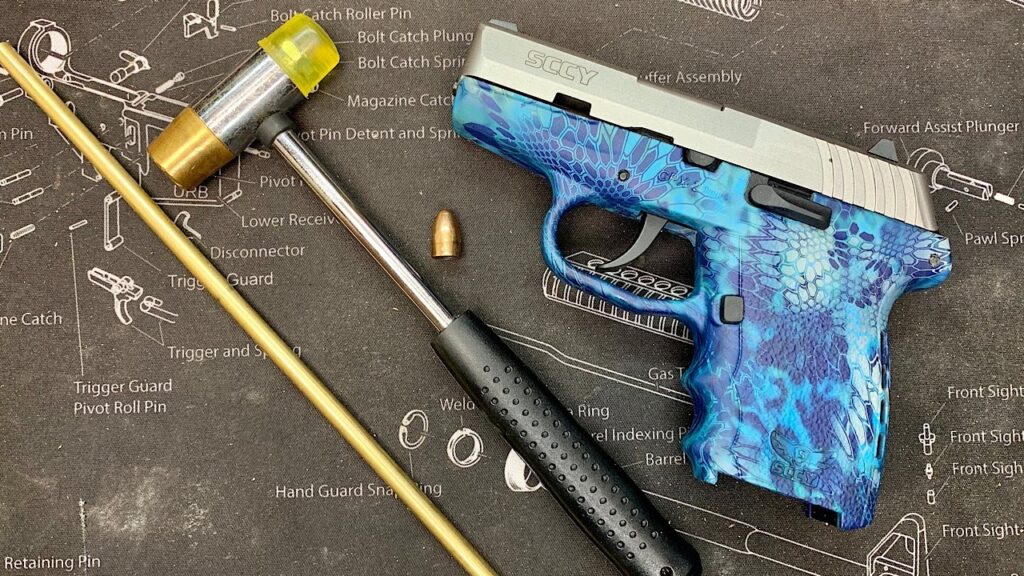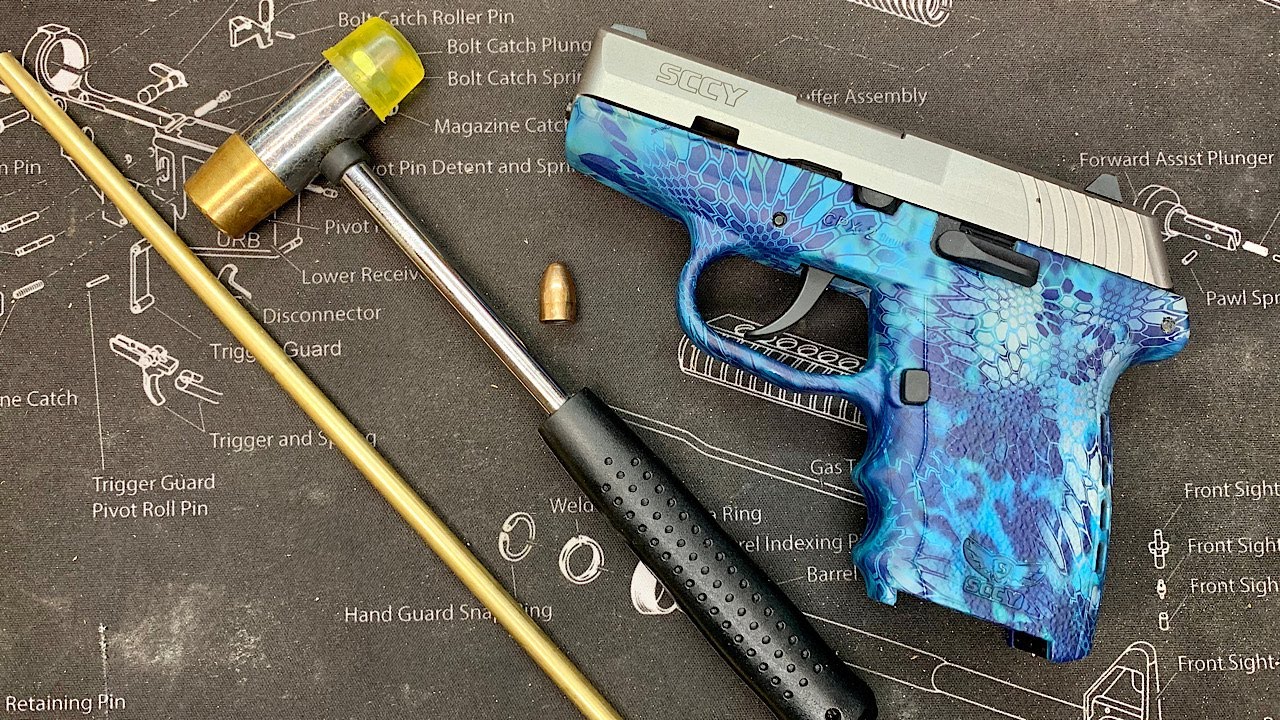
Squib Round: Understanding Causes, Consequences, and Prevention
A squib round, a term familiar to gun owners and shooting enthusiasts, refers to a cartridge malfunction where the bullet fails to exit the barrel upon firing. Instead, it becomes lodged partway down, posing a significant risk if another round is fired behind it. This article delves into the causes, consequences, and preventative measures associated with squib rounds, aiming to provide a comprehensive understanding of this potentially dangerous occurrence.
What is a Squib Round?
A squib round, also known as a squib load, is a cartridge that doesn’t contain enough propellant, or the propellant fails to ignite properly. This results in insufficient force to propel the bullet out of the gun barrel. The bullet travels only a short distance, typically lodging itself within the barrel. Recognizing a squib round is crucial for firearm safety. The sound produced is often noticeably quieter than a normal shot, and there may be little to no recoil.
Causes of Squib Rounds
Several factors can contribute to the occurrence of a squib round. Understanding these causes is the first step toward preventing them:
- Insufficient Powder Charge: This is the most common cause. During the ammunition manufacturing process, if the correct amount of gunpowder is not loaded into the cartridge, the resulting lack of pressure will prevent the bullet from exiting the barrel. This can happen from automated machinery malfunction or even human error during hand-loading.
- Powder Degradation: Gunpowder can degrade over time, especially if stored improperly. Exposure to moisture or extreme temperatures can alter its chemical composition, reducing its ability to generate the necessary pressure.
- Primer Issues: The primer is the small explosive charge that ignites the gunpowder. If the primer is faulty or contaminated, it may not provide a sufficient spark to ignite the powder effectively, leading to a squib round.
- Hand-Loading Errors: Reloading ammunition can be a cost-effective way to practice shooting, but it requires meticulous attention to detail. Errors in measuring powder, selecting the wrong type of powder, or improperly seating the bullet can all lead to a squib round.
- Ammunition Storage: Improper storage of ammunition can lead to degradation of the powder and primers, increasing the likelihood of squib rounds. Ammunition should be stored in a cool, dry place, away from direct sunlight and extreme temperatures.
Consequences of Firing a Squib Round
Firing a subsequent round after a squib round has lodged a bullet in the barrel can have severe consequences:
- Obstruction: The lodged bullet creates an obstruction in the barrel.
- Barrel Damage: Firing another round behind the obstructed bullet can cause the barrel to bulge, crack, or even explode. This is due to the immense pressure build-up behind the obstruction.
- Firearm Damage: Beyond barrel damage, other parts of the firearm can be damaged, including the slide, frame, and other internal components.
- Serious Injury: The explosion of a firearm can cause serious injury to the shooter and bystanders. Fragments of metal can be propelled at high speeds, causing lacerations, eye injuries, and even death.
Recognizing a Squib Round
Identifying a squib round is paramount in preventing catastrophic firearm failures and injuries. Here’s what to look for:
- Reduced Recoil: A squib round typically produces significantly less recoil than a normal round. The lack of sufficient propellant means the firearm doesn’t cycle properly.
- Muffled Sound: The sound of a squib round is often noticeably quieter than a standard shot. It may sound like a “pop” or a “thud” rather than a sharp “bang.”
- Unusual Sound: Pay attention to any unusual sounds during firing. A squib round might produce a sound that is different from the normal report of the firearm.
- Failure to Cycle: Semi-automatic firearms rely on the recoil of the cartridge to cycle the action and load the next round. A squib round usually lacks the necessary power to cycle the action, resulting in a failure to feed or eject.
- Bullet Hole Check: If possible and safe, check the target. A squib round will obviously not hit the target with the same force or may not hit the target at all.
Preventing Squib Rounds
While it’s impossible to eliminate the risk of squib rounds entirely, there are several steps you can take to minimize their occurrence:
- Use Quality Ammunition: Purchase ammunition from reputable manufacturers known for their quality control standards. Avoid using cheap or unknown brands.
- Inspect Ammunition: Before loading, visually inspect each cartridge for any signs of damage or defects, such as dents, corrosion, or loose bullets.
- Proper Ammunition Storage: Store ammunition in a cool, dry place, away from direct sunlight and extreme temperatures. This helps prevent powder degradation.
- Hand-Loading Precautions: If you reload your own ammunition, follow established reloading procedures meticulously. Use accurate scales to measure powder charges, and double-check your work. Consult reputable reloading manuals for load data.
- Regular Firearm Maintenance: Keep your firearm clean and well-maintained. A dirty or poorly maintained firearm can contribute to malfunctions, including squib rounds.
- Dry Firing Awareness: Excessive dry firing, especially with certain firearms, can damage the firing pin or other components, potentially leading to primer ignition problems and increasing the risk of squib rounds.
- Listen and Feel: Pay close attention to the sound and feel of each shot. If anything seems unusual, stop firing immediately and investigate.
What to Do if You Suspect a Squib Round
If you suspect you’ve experienced a squib round, the most important thing is to STOP FIRING IMMEDIATELY. Follow these steps:
- Keep the firearm pointed in a safe direction. Never point the muzzle at anything you are not willing to destroy.
- Safely unload the firearm. Carefully remove the magazine or cylinder and eject any unfired cartridges.
- Visually inspect the barrel. Look for any signs of obstruction. A bullet lodged in the barrel will be visible upon close inspection. Use a cleaning rod to gently probe the barrel to confirm the obstruction.
- Do not attempt to fire another round. Firing another round with an obstruction in the barrel can cause catastrophic damage to the firearm and serious injury to the shooter.
- Seek professional assistance. If you confirm a bullet is lodged in the barrel, take the firearm to a qualified gunsmith for removal. Do not attempt to remove the bullet yourself, as you could damage the firearm or injure yourself.
Conclusion
Squib rounds pose a significant safety risk to shooters. By understanding the causes, consequences, and preventative measures associated with squib rounds, you can significantly reduce the risk of experiencing this dangerous malfunction. Always practice safe gun handling procedures, use quality ammunition, and pay close attention to the sound and feel of each shot. Remember, vigilance and caution are key to preventing firearm accidents and ensuring a safe shooting experience. [See also: Firearm Safety Tips] A squib round can be a scary experience, but with the right knowledge and precautions, you can minimize the risks and enjoy the sport of shooting safely. Regular firearm maintenance is also critical. By taking these steps, you can protect yourself and others from the potential dangers of a squib round. Always prioritize safety when handling firearms.

